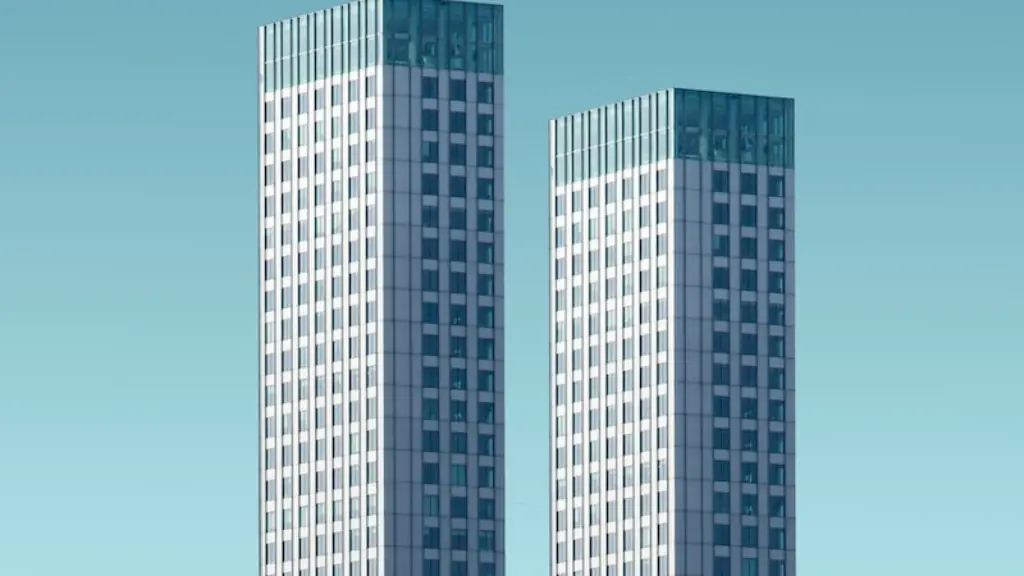Architecture is an essential part of human life and has an immense influence on us and the way we perceive the world around us. From ancient temples to the sleek skyscrapers of today, it is hard not to appreciate the great societal value that architecture adds to our lives. But what is the role of architecture in our society and how does it influence us?
Architecture has been around for thousands of years and has changed drastically over time. The history of architecture has seen structures that range from awe inspiring monuments to utilitarian buildings and bridges. These structures and their different styles have served as a source of inspiration, giving us a glimpse into past cultures and beliefs, while defining the way modern society views architecture. In a way, architecture can be seen as a reflection of a society’s values, beliefs and aspirations.
Architecture also has practical applications in our society. Structures such as hospitals and schools provide essential services that are essential for our well-being. Moreover, houses, offices and other public buildings give us a place to live and work, creating a sense of identity and belonging. In addition, architecture can also help to reduce environmental damage as it can be used to design energy-efficient buildings that reduce energy costs and help to protect the environment.
Another important role that architecture plays in our society is that of urban planning. By designing urban landscapes, architects can play an important role in creating an environment that is conducive to living and working. Properly planned urban areas can help to reduce crime and encourage people to exercise, leading to improved public health. Additionally, architects can help to design vibrant communities, providing areas for social interactions and reducing feelings of loneliness and isolation.
In addition to its practical applications, architecture also has an aesthetic value. Good architecture provides us with a sense of beauty and harmony that can be appreciated and enjoyed by all. This appreciation can lead to a better understanding of our environment, as well as inspire us to create better living and working spaces.
Furthermore, architecture can also be a source of inspiration. By looking at beautiful buildings, we can be motivated to think differently and come up with new ideas. This can lead to the development of innovative solutions that can benefit our society in a number of ways.
Overall, architecture is an important part of society and has a great influence on us. From providing us with practical applications like urban planning to its aesthetic value, architecture plays a crucial role in our lives. Good architecture can provide us with a sense of beauty and harmony, inspire us to create better living spaces and provide benefits to the environment.
Architecture and Sustainability
Sustainability is a major issue for communities and nations around the world, and architecture plays an important role in achieving it. Architects can design structures that use natural resources efficiently, reducing the need for energy, water and other materials. Furthermore, architects can use renewable resources to create energy-efficient buildings that help to reduce carbon emissions. By combining these strategies, architects can help to create sustainable cities and towns that contribute to a greener world.
In addition, sustainable architecture can provide economic benefits. By investing in energy-efficient technologies and materials, architects can create buildings that are more cost-effective to maintain and operate. This can lead to energy savings, reduced noise pollution and lower maintenance costs, resulting in a more prosperous society.
On top of this, sustainable architecture can also help improve public health. Architects can create buildings that use natural light and ventilation, reducing the need for air conditioning and improving indoor air quality. This in turn can lead to improved well-being, productivity and even lifespan.
Finally, sustainable architecture can help to minimize the environmental impact of buildings. By using recycled materials, buildings can reduce their resource consumption, creating a positive environmental impact. Architects can also create green roofs and other green structures that help to absorb excess rainwater and reduce the urban heat island effect.
Architecture and Community Relationship
Architecture is a powerful tool for creating a sense of community and belonging, providing a place for people to come together and bond. By designing public spaces that are inviting, accessible and appealing, architects can create places that inspire social interactions and community engagement.
In addition, architecture can also help to improve the local economy. By providing a vibrant and attractive environment, architecture can draw businesses and tourists to the area, leading to job creation and increased economic activity.
Furthermore, architecture can also help to promote public safety. By creating well thought out and secure buildings, architects can make it easier for law enforcement to patrol and monitor areas, giving people a sense of safety and security.
Moreover, architecture can also help to promote education and learning. By designing structures specifically designed for educational purposes, architects can provide students with a more stimulating learning environment, encouraging them to reach their full potential.
Architecture and Mental Health
In recent years, there has been a growing appreciation for the value of architecture in improving mental health. Studies have shown that good architecture can reduce stress and improve wellbeing. By creating a pleasant and calming environment, architecture can make it easier for people to relax, leading to improved mental health.
Moreover, architecture can also help to improve physical health. Good design can make it easier for people to access public spaces, encouraging them to get outdoors and exercise. This in turn can improve physical fitness, aiding both mental and physical health.
Additionally, architecture can also be used to improve social interaction. By creating spaces that encourage interaction, architects can create environments that are more conducive to relationships and socializing. This can help to bridge social divides and reduce feelings of loneliness and isolation.
Finally, architecture can also help to improve community cohesion. By designing vibrant public spaces that are accessible to all, architects can promote social inclusion and create a more harmonious and unified society.
Architecture and Mental Wellbeing
In addition to its well-documented physical benefits, architecture can also have a positive effect on mental wellbeing. Studies have shown that good design can make people feel happier and more relaxed, providing a needed respite from the daily stresses of life.
Moreover, architecture can also help to provide a sense of identity and belonging. By designing buildings that reflect the culture, values and history of a community, architects can create spaces that foster a sense of connection and bring people together. This in turn can lead to healthier and more connected communities.
Furthermore, architecture can also be used to create a stimulating environment. By designing structures that feature bright colors, textures and patterns, architects can create an environment that is more inviting and inspiring to inhabit. This can lead to increased creativity, productivity and mental wellbeing.
Finally, architecture can also be used to create a more pleasant environment. By using natural materials and incorporating nature into buildings, architects can create calming and refreshing spaces that provide a welcome respite from the hustle and bustle of everyday life.
Architecture and Nature
Architecture and nature go hand in hand, with each having a positive effect on the other. Good design can help to integrate nature into a building, creating a more pleasant and harmonious living environment.
In addition, architecture can also be used to create spaces that are more eco-friendly. By using natural materials and incorporating sustainable design principles, architects can create buildings that minimize their impact on the environment, leading to greener and more vibrant communities.
Moreover, architecture can also be used to create spaces that encourage people to get outdoors and explore nature. By designing spaces that are open and accessible, architects can make it easier for people to spend time outdoors, leading to improved physical and mental health.
Finally, architecture can also help to foster a greater appreciation for nature. By creating structures that feature nature-inspired designs and incorporate natural materials, architects can encourage people to appreciate and respect the natural world.





